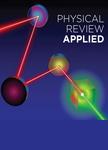版权所有:内蒙古大学图书馆 技术提供:维普资讯• 智图
内蒙古自治区呼和浩特市赛罕区大学西街235号 邮编: 010021

作者机构:Department of Electrical Engineering Stanford University Stanford California 94305 USA Department of Bioengineering Stanford University Stanford California 94305 USA Neurosciences Program Stanford University Stanford California 94305 USA Department of Psychiatry and Behavioral Sciences Stanford University Stanford California 94305 USA Howard Hughes Medical Institute Stanford University Stanford California 94305 USA CNC Program Stanford University Stanford California 94305 USA Department of Mechanical Engineering Stanford University Stanford California 94305 USA
出 版 物:《Physical Review Applied》 (Phys. Rev. Appl.)
年 卷 期:2015年第4卷第2期
页 面:024001-024001页
核心收录:
基 金:U.S. Department of Defense
主 题:Brain Neuronal network activity Neuronal imaging
摘 要:Optical or electrical stimulation of neural circuits in mice during natural behavior is an important paradigm for studying brain function. Conventional systems for optogenetics and electrical microstimulation require tethers or large head-mounted devices that disrupt animal behavior. We report a method for wireless powering of small-scale implanted devices based on the strong localization of energy that occurs during resonant interaction between a radio-frequency cavity and intrinsic modes in mice. The system features self-tracking over a wide (16-cm diameter) operational area, and is used to demonstrate wireless activation of cortical neurons with miniaturized stimulators (10 mm3, 20 mg) fully implanted under the skin.